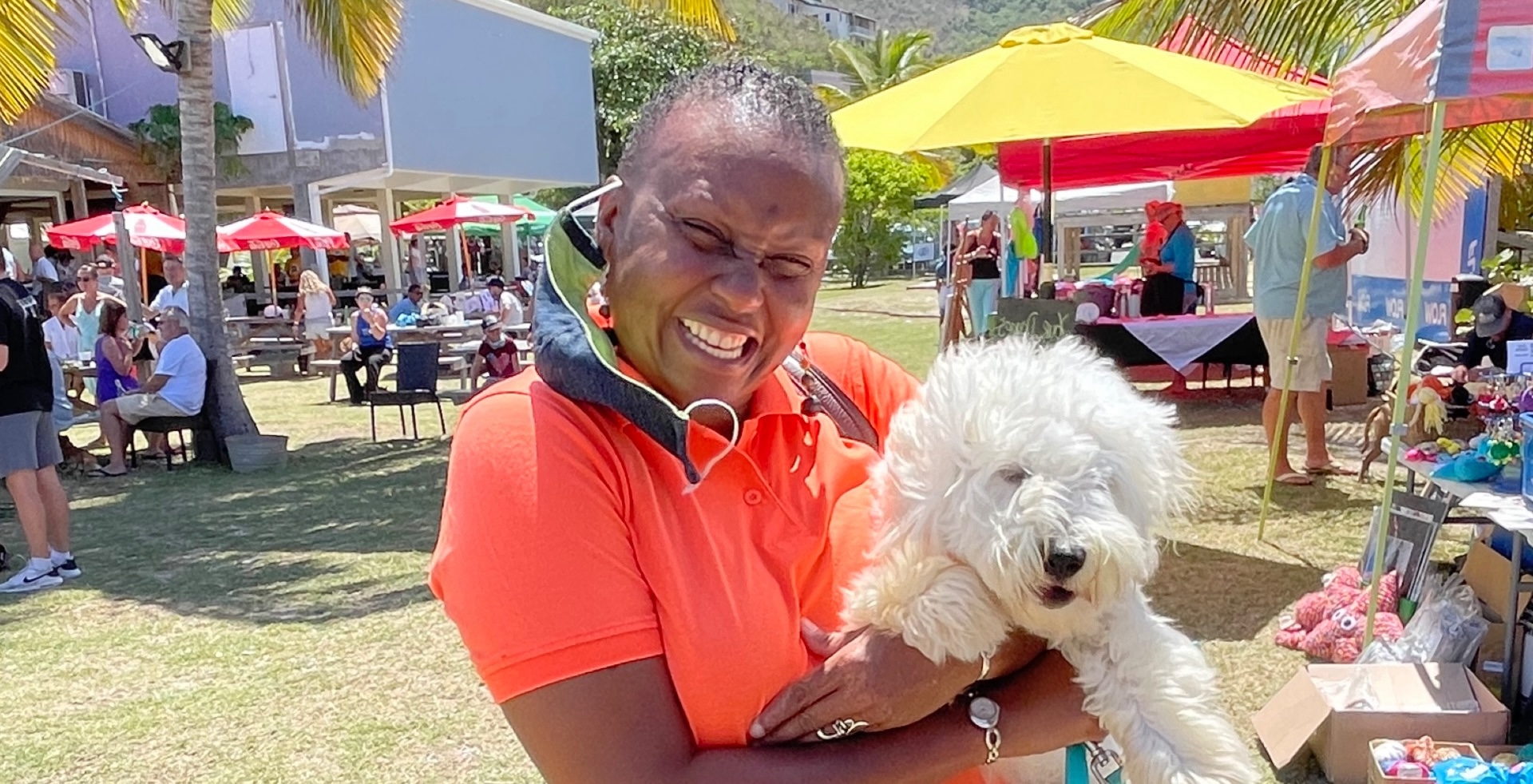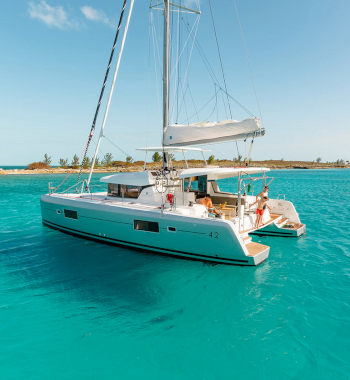Old Government House: Where Royalty & History Mingle
Queen Elizabeth visited, and her sister, Princess Margaret, slept there. Old Government House, sitting on a knoll above Road Harbour, is now a museum, but was once the residence of a succession of British Administrators, Commissioners and Governors. A place where both British royalty and BVI citizens were once entertained, it is an elegant reminder of a time when the rhythm of the Virgin Islands was slower, and pomp and ceremony punctuated official life.
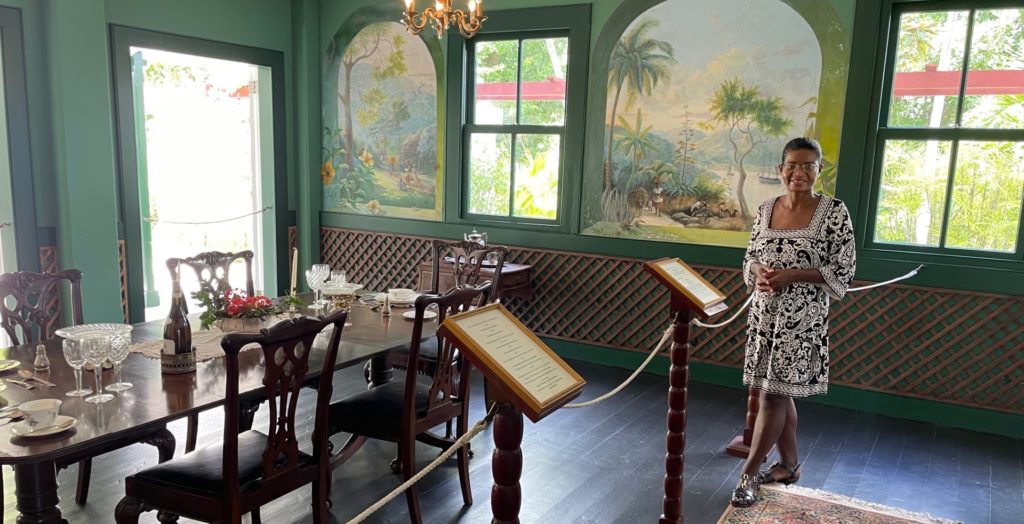
Touched with Victorian grace, Old Government House Museum never fails to delight. It has weathered hurricanes, and a pandemic, and yet, has proved to be an enduring slice of BVI history. I made my latest visit to Old Government House with a friend in March. Gracious and knowledgeable, Museum Supervisor Nilsa Wheatley met us at the entrance and offered to take us on a tour. We gladly accepted.
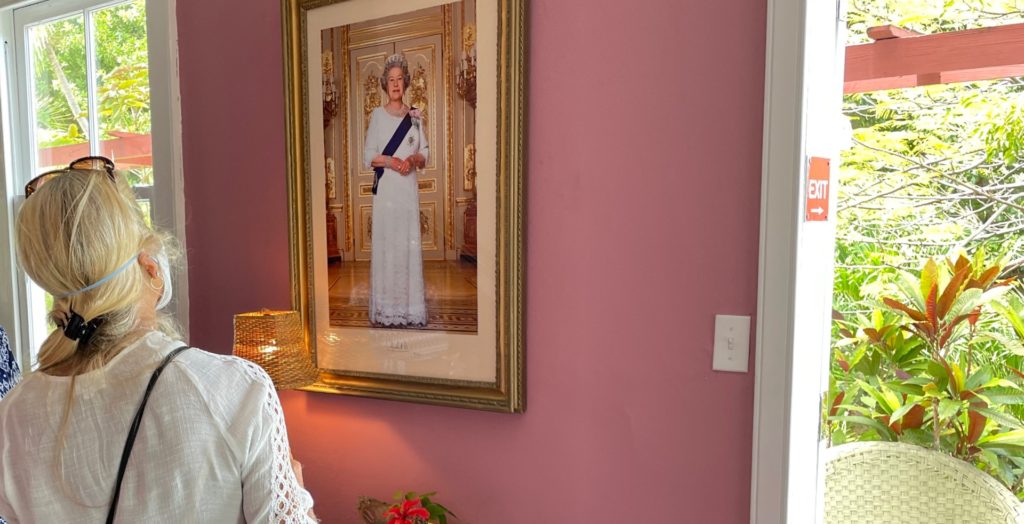
The house was built in 1926, replacing a wooden and masonry structure destroyed in the hurricane of 1924. Nilsa guided me into the only room to survive the devastating storm where an account of the hurricane by the then governor’s wife, Mrs. Agnes Hancock, is on display. Cecil Georges, son of BVI businessman J.E.W. Georges, was in charge of constructing the new residence, which was built with thick masonry walls with the aim of withstanding further natural disasters. Filling a series of glass cases is memorabilia from past governors, including the white helmet and tunic worn on official occasions by Frank Savage, the governor from 1998 to 2002. A fun collectible on display is a tea service created to mark the birth of Princess Margaret.
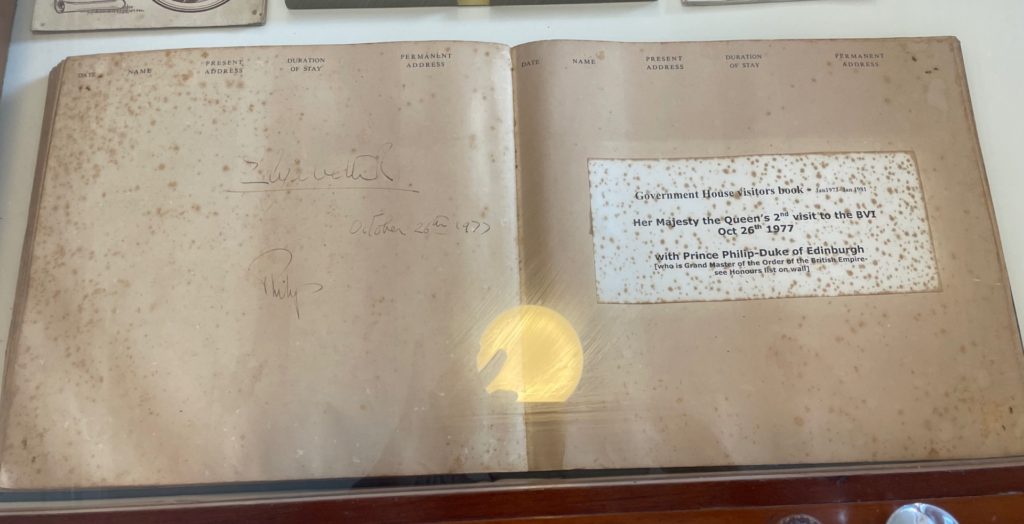
A glass cabinet contained a guest book open to the page with Queen Elizabeth II’s signature, signed during her second visit to the Virgin Islands in 1977. The Queen and her husband Prince Phillip did not stay at Government House, opting for the comforts of the royal yacht Britannia which had anchored in Road Harbour; a photo of the ship hangs near the guest book. It was the second of two visits she and the Prince made together to the BVI; the first was in 1966. Other notable members of the royal family to visit Old Government House were Queen Elizabeth’s mother, the Queen Mother; her sister, Princess Margaret; Princess Alice, Prince Phillip’s mother and Prince Andrew, the royal couple’s second son.
A framed list of the Monarch’s Representatives hangs on a wall. The earliest, a Captain Burt, was here from 1666 to 1672, the year the Virgin Islands officially came under British rule as a part of the Colony of the Leeward Islands. A fort guarding the entrance of Road Harbour was named after Burt, one of a series of forts that dotted the island, and the stone walls of one of them can be seen in the garden at the back of Government House.
Another early administrator that left his stamp on the BVI was Commissioner Herbert Walter Peebles. Resident from 1919 to 1922, Peebles initiated the construction of the Virgin Islands’ first hospital, a milestone in the Territory’s infrastructure. Until 60 or 70 years ago, there were no vehicles in the Virgin Islands, and the Territory’s administrators, like all Virgin Islands residents, travelled by horseback, foot or sloop, Nilsa noted.

She next pointed to a map of Kingstown where a community of freed slaves had settled in the early 19thcentury. The group, which had been aboard a slave vessel, were liberated mid voyage when the slave trade was abolished in 1807. They eventually settled on Tortola where they were granted land at Kingstown. The stone walls of the settlement’s Anglican Church are all that remains of the settlement today.
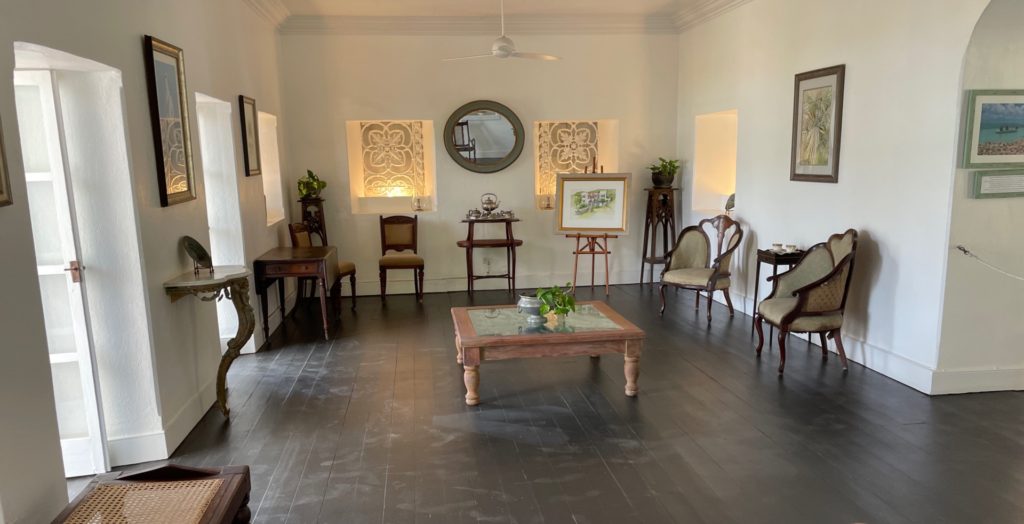
The drawing room, elegantly decorated with 19th and early 20th century mahogany furniture, was next on the tour. Nilsa explained that the drawing room was used for tea parties and after dinner drinks, and I was transported to a bygone era when women in flowered dresses and white gloves gossiped about island life while enjoying a cup of tea with the governor’s wife.
The dining room has deep green walls and wide French doors opening onto a large terrace and garden. Murals painted by Margaret Barwick, the wife of Governor David Barwick from 1982-1986, and assisted by local artists, animate the walls with scenes of 19th century BVI life.
Mrs. Barwick went onto become a well-known horticulturist, and we could see her hand in the terraced garden that opens up from a patio at the back of the museum; it is reputed to be one of the finest Government House gardens in the Caribbean. Mrs. Barwick’s green thumb is also evident in the J.R. O’Neal Botanic Gardens in Road Town, which she and BVI conservationist and businessman Jose O’Neal created in the mid-1980s.
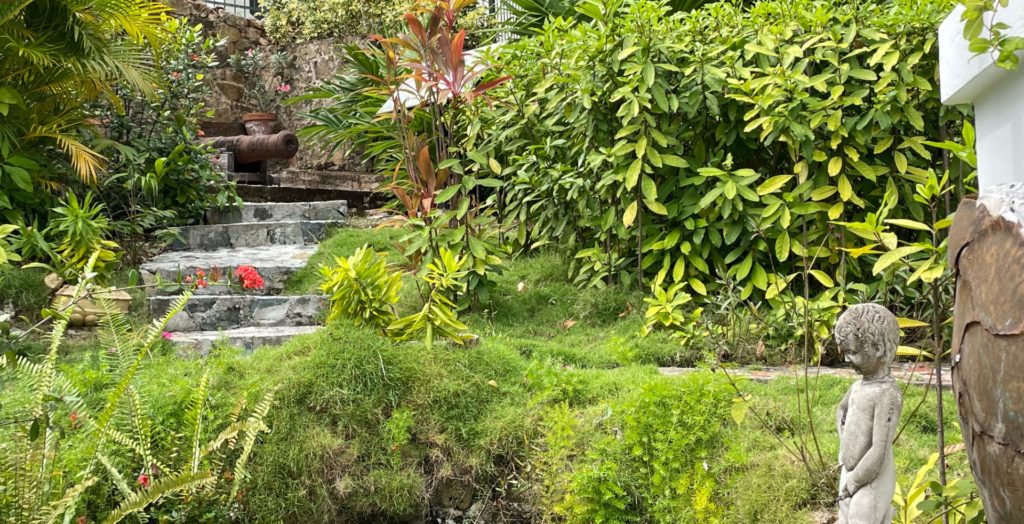
Time wasn’t kind to Government House, and by 1996 the building required extensive repair and modernization. Slated for demolition, a group of local residents came together to save the historic structure. Spearheaded by Captain Hugh Whistler, a contractor and long-term resident, the group raised sufficient funds to turn the old residence into a museum, which opened its doors to the public in late 2003. A new home for the Governor was built next door. Today a board of dedicated BVI residents oversees the museum. Governor John Rankin is the board’s chairman.
To read more about Old Government House and its fascinating history, including additional historical vignettes and first-hand accounts of life in the BVI in the early 20th century, visit the Old Government House website https://www.oghm.org
– Claudia Colli

